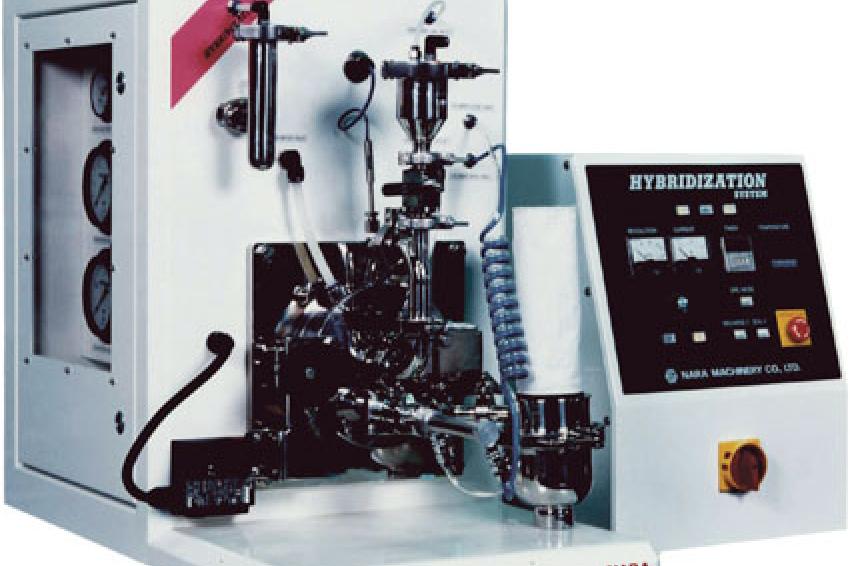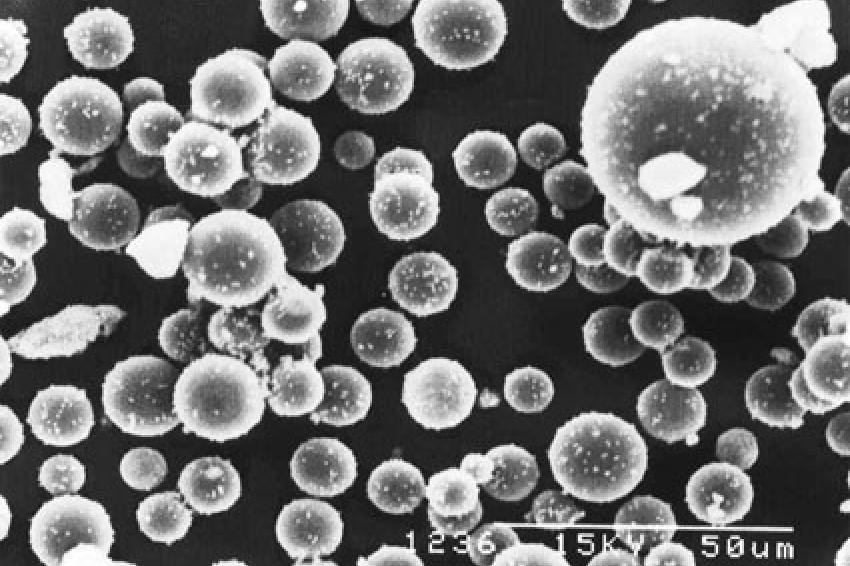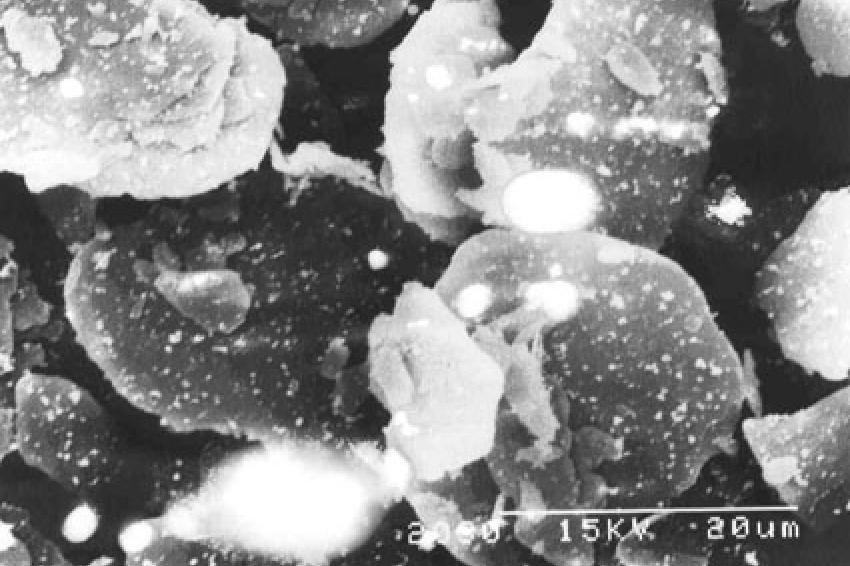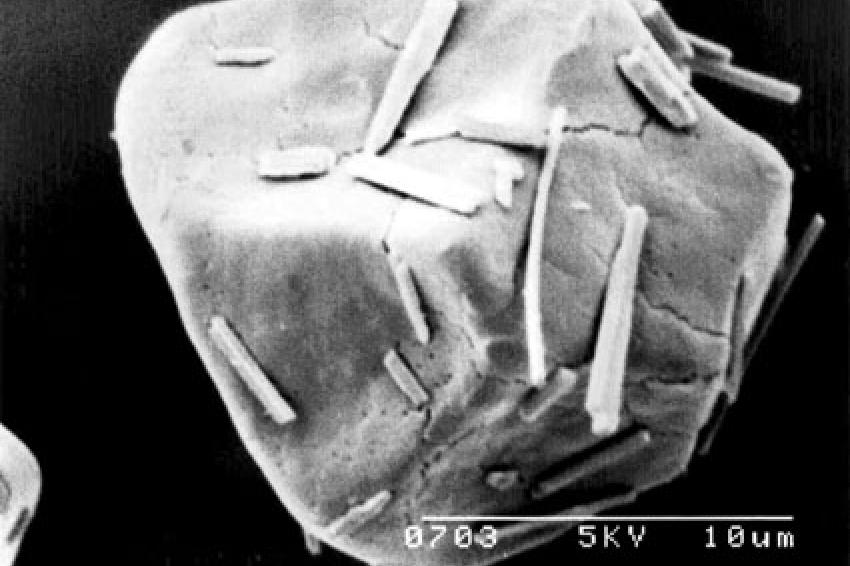Defining New Borders
Physical Combination Of Nanometer And Micrometer Particles
Small High Tech - Producing fine powders with highly specific characteristics is one of the most important targets of particle technology nowadays. Developments in nanotechnology allow the production of fine particles, which have - in comparison to the macroscopic world - different specific properties. It is akin to comparing the properties of a tree trunk to the finest plywood.
The thinner and finer plywood permits to use the wooden raw material differently than the tree trunk. This is due to the structure of the wood. Consequently, the observed flexibility and strength is significantly different. In particle technology or nanotechnology, the new features of the submicron particle are applied directly to produce novel products with new or improved characteristics. Since micron and nanoparticles are versatile, they find applications in various industries, such as in pharma, metallurgy, electronics, food and chemicals.
In general, the particle technology distinguishes between chemical and physical processes.
In chemical processes, particles are produced by reactions in nano-size or fine particles are applied on larger particles or large areas. Characteristic for these processes is in general the use of solvent, which is necessary for the desired reaction. For the environment protection, the solvent is recovered and often reused after purification.
On the other side there are the physical processes that use thermal, mechanical, radiant or electrical energy to combine different substances - the physical laser deposition (PLD) is an example for this kind of operation. A laser beam ablates particles from a matrix substance. The particles then diffuse on to a carrier medium. For all these challenges, the mechanical hybridization system is a potential solution.
Uses In Electronics
In electronics, it is crucial to exactly fix the conductivity of particle surfaces. One example for this process is the coating of carbon black with polymethylmethacrylate (PMMA). As figure 1 shows, a discrete layer of PMMA on the carbon black particle was established. The shape of the PMMA layer - that is the variable loading of the carbon particle surface with PMMA - can selectively adjust the conductivity of the particle surface. Examples of other products that have highly specific surface properties are toner powder, photo capacitors, rapid prototyping and gas chromatography.
Uses In Powder Metallurgy
In powder metallurgy, it is possible to enhance applicability of powder metal by improving the flow or sintering properties. On the other hand, novel powder combinations, generated by kneading, compression and shearing, can work like an alloy in final application. Furthermore, it is possible to obtain special effects at the grain boundaries of metals by deposition of nanoparticles along the boundaries. An example for the improvement of flow properties and sintering is shown in figure 2.
In the process, the metal has been rounded so far that a round particle is created. It is easy to comprehend that the flowability of round particles is better because they do not get stuck together. For the sintering process this is beneficial, too, because the powder flows easier into the mould and this leads to a higher starting density of the pellet. Another way to improve the flowability or the sintering attributes of metal, except for the rounding of the processed material, might be a coating with lubricant like polyacrylates.
Uses in Cosmetics and Pharma
The cosmetic and pharmaceutical industry also requires highly specific micron and nano products.
For example the cosmetic industry produces mainly skin related products. The different areas of the skin dedicate in this case the requested pH values of the processed substances. Fashion trends provide further requirements, such as specifications for the shade of colors. The touch and feel of a cream are other factors in the design of skin cosmetics.
Particle design is needed in order take all of these factors into account. Also, the reproducibility of a defined quality becomes increasingly important.
Figure 3 shows an example of such a specific powder - a white pigment applied to a soft, skin-friendly carrier.
The production of highly specific active ingredients is the main research aim of all leading manufacturers in the pharmaceutical industry. The docking of highly specific proteins on particles for targeted disease control, or ensuring an amorphous product consistency for a better absorption in the human body, are only two reasons for a very precise processing of substances.
European Regulation
From 2012 on, a new European regulation will require cosmetic manufacturers to list any nanoparticles contained in products marketed within the EU. From a marketing standpoint, the term "nano" has a partly negative connotation - some people wrongly understand it as a warning. The To avoid "nano" on the ingredient list of a product hybridization system offers many possibilities to process nano-scale materials in or on bigger carrier media without losing their properties and effectiveness.
Conclusion
A consolidated view of all these factors indicates that the hybridization system is particularly suitable for the modification of surface properties and structures of powders. It is possible to create a large variety of clearly defined different structures on surfaces. The application of very fine particles that are plastically deformable enables the user to produce a film coating on a larger particle. In this case, the choice of the fine particle quantity allows not only a complete, but also a defined incomplete coating.
On the other hand, if a hard particle is used, it is not possible to achieve a film coating. In this case, only a structure similar to the compound eye of a bee can be obtained. Nevertheless, a surface coated in that way can also act hydrophobic in a liquid medium, if the interspace of the particles is smaller than the wetting angle of the liquid.
For hard coating particles, as well as for soft particle coatings, due to the amount of material used, it is possible to vary the coverage of the core particle surface. In this way, specific nano surface structure on micron particles can be established.
The dream of researchers to produce innovative and unique products has finally reached the next level. In a nutshell, the hybridization system can be used to produce new functional material composites or hybrids; to improve the particle and powder properties such as flowability, dispersibility and wettability; and to produce substitutes for expensive and rare substances by the effective, direct process
Contact
NARA Machinery Europe Co. Ltd.
Europaallee 46
50226 Frechen
Germany
+49 2234 2776 0
+49 2234 23067








